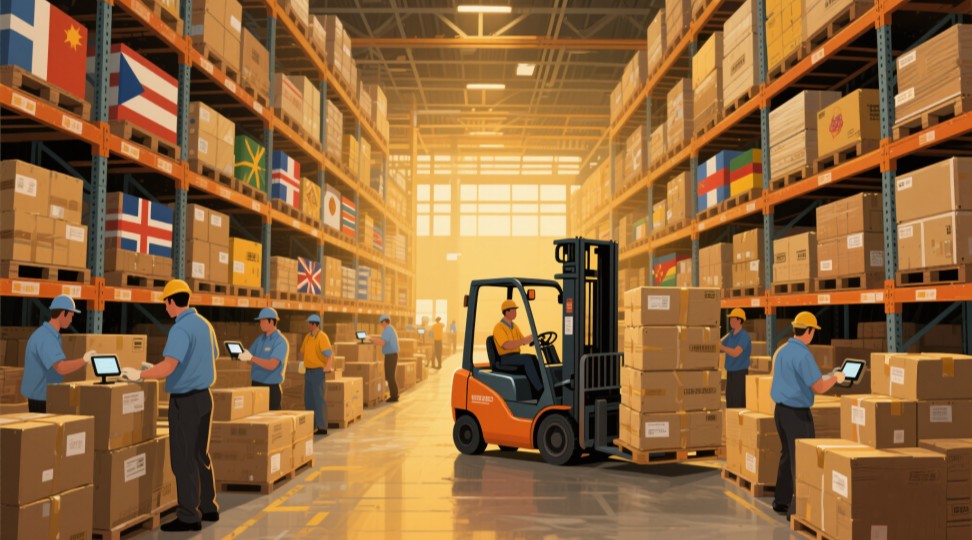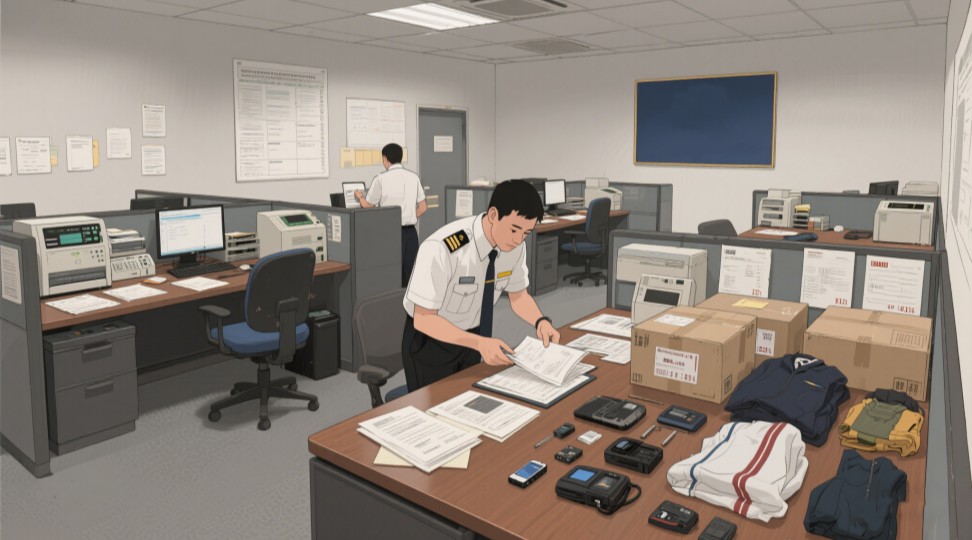Как работает международная логистическая цепочка
Миллионы товаров — от смартфонов до медицинских принадлежностей — ежедневно пересекают границы, чтобы попасть к компаниям и потребителям. Это глобальное движение опирается на международную логистическую цепочку, которая координирует транспортировку, правила и технологии для эффективной доставки продуктов. Независимо от того, управляете ли вы бизнесом или просто хотите понять мировую торговлю, это руководство объясняет основы, проблемы и инновации, формирующие международную логистику сегодня.

1. Что такое международная логистическая цепочка?
The международная логистическая цепочка это сеть взаимосвязанных этапов, предназначенных для перемещения товаров от производителей к конечным пользователям по всему миру. Она включает планирование транспортных маршрутов, управление таможенными требованиями, оптимизацию складского хранения и обеспечение своевременной доставки. Например, поставка автомобильных деталей из Германии в Мексику может сочетать железнодорожный, морской и автомобильный транспорт, причем каждый этап требует точной координации для избежания задержек.
Ключевые цели включают минимизацию затрат, снижение воздействия на окружающую среду и поддержание прозрачности для предприятий и клиентов.
2. Основные компоненты международной логистики
А. Методы транспортировки
Выбор правильного вида транспорта зависит от бюджета, срочности и типа продукта:
- Морские перевозки: экономичны для крупных, несрочных грузов (например, сырья).
- Авиаперевозки: быстрее, но дороже, идеально подходят для дорогостоящих товаров, таких как электроника.
- Трансграничные грузоперевозки: соединяют регионы внутри континентов для доставки груза конечному потребителю.
| Транспортный режим | Эффективность затрат | Типичное время транзита |
|---|
| Морские перевозки | Высокий | 35–45 дней |
| Воздушные грузоперевозки | Низкий | 3–7 дней |
| Железнодорожные грузоперевозки | Умеренный | 30–35 дней |
| Автомобильные грузоперевозки | Умеренный | 7–12 дней |
Б. Процесс таможенного оформления
Каждая международная отправка должна соответствовать местным правилам. Основные шаги включают:
- Представление точных коммерческих счетов-фактур и коносаментов.
- Предоставление сертификата происхождения для подтверждения места производства.
- Уплата соответствующих пошлин и налогов.
Задержки часто происходят из-за неполной документации или неправильной классификации товаров. Партнерство с опытными поставщиками, такими как Уважаемый железнодорожный транспорт обеспечивает соответствие требованиям и сводит к минимуму сбои.

C. Складирование и управление запасами
Современное управление глобальной цепочкой поставок опирается на стратегически расположенные склады, оснащенные автоматизацией. Например, объекты вблизи крупных портов (например, Шанхая или Гамбурга) сокращают время транзита, в то время как системы инвентаризации отслеживают уровни запасов в режиме реального времени, чтобы предотвратить дефицит.
D. Интеграция технологий
Такие инструменты, как отслеживание с использованием IoT и документация на основе блокчейна, повышают прозрачность и безопасность. Датчики отслеживают состояние груза (например, температуру для фармацевтических препаратов), а блокчейн обеспечивает защиту от несанкционированного доступа к записям о поставках. Такие платформы, как Уважаемый железнодорожный транспорт интегрируйте эти технологии для оптимизации операций клиентов.
3. Преодоление проблем в глобальной логистике
К наиболее распространенным препятствиям относятся:
- Задержки: перегруженность портов, экстремальные погодные условия или геополитические проблемы.
- Колебания цен: цены и тарифы на топливо могут влиять на бюджеты.
- Требования к устойчивому развитию: клиенты все чаще ожидают экологически безопасных методов работы.
Решения:
- Используйте мультимодальные перевозки для изменения маршрутов поставок в периоды сбоев.
- Используйте прогностическую аналитику для прогнозирования затрат и рисков.
- Инвестируйте в экологически чистые логистические инициативы, такие как электромобили для доставки.
4. Роль технологий в современной логистике
Инновации, повышающие эффективность:
- Планирование на основе искусственного интеллекта: алгоритмы оптимизируют маршруты и распределение запасов.
- Автоматизированные таможенные платформы: сокращение времени обработки за счет оцифровки документов.
- Инструменты отслеживания выбросов углерода: помогают компаниям измерять и компенсировать выбросы.
Эти достижения позволяют таким поставщикам, как Уважаемый железнодорожный транспорт предлагать надежные услуги международных грузоперевозок с большей точностью и прозрачностью.
5. Будущие тенденции, за которыми стоит следить
- Устойчивые цепочки поставок: диверсификация поставщиков и транспортных маршрутов.
- Ниаршоринг: производство товаров ближе к целевым рынкам для сокращения сроков поставки.
- Повышенная прозрачность: Потребители требуют сквозной прозрачности пути продукта.
Заключение: Упрощение глобальной логистики
Международная логистическая цепочка — это сложная, но управляемая система, построенная на сотрудничестве, технологиях и адаптивности. Понимая ее компоненты — от выбора транспорта до соблюдения таможенных правил — компании могут оптимизировать операции и эффективно удовлетворять ожидания клиентов.
Для индивидуальной поддержки в навигации по глобальной логистике изучите Уважаемый железнодорожный транспорт. Наш опыт гарантирует точность обработки ваших грузов от места отправления до места назначения.
Часто задаваемые вопросы
В1: Как выбрать между морскими и воздушными грузоперевозками?
Морские грузоперевозки подходят для крупных, несрочных грузов; воздушные грузоперевозки лучше подходят для срочных грузов.
В2: Какие документы необходимы для таможенного оформления?
К основным документам относятся коммерческий счет-фактура, коносамент и сертификат происхождения.
В3: Могут ли логистические технологии снизить затраты?
Да. Такие инструменты, как программное обеспечение для оптимизации маршрутов и автоматизированные таможенные системы, снижают расходы.
В4: Что такое зеленая логистика?
Такие методы, как использование возобновляемых источников энергии на складах или оптимизация маршрутов доставки для сокращения выбросов.
В5: Почему стоит сотрудничать с Dear Railway Transport?
Мы объединяем отраслевой опыт и передовые технологии для предоставления эффективных и прозрачных услуг.
















 IPv6 ПОДДЕРЖИВАЕТСЯ СЕТЬЮ
IPv6 ПОДДЕРЖИВАЕТСЯ СЕТЬЮ
